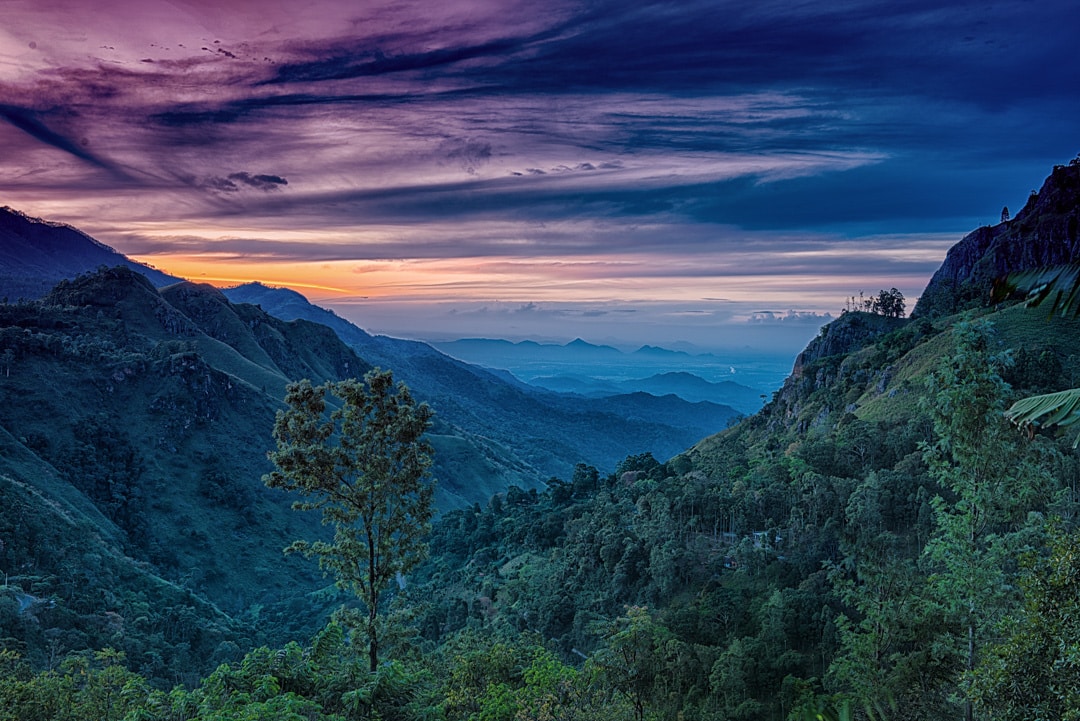DEMODARA BRIDGE AND THE LOOP
Demodara is a picturesque town in the Central Highlands and is widely known for its curved 9 arch bridge between Ella and Demodara stations and the famous railway loop, a colonial engineering masterpiece. It is also known as the ‘Bridge in the Sky’. First conceptualised by a Sri Lankan, the design is called “Looping the loop”.
One end of the bridge is a tunnel, and as the train passes the station, the railway line loops upon itself, encircles an adjoining hill top, and passes through a tunnel underneath the station which is about 75 – 100 feet below that. The design enabled engineers to take the railway track to a higher elevation while at the same time keeping to the gradient stipulated by the standards.
The Bridge is almost 100 years old and has been built with blocks of stone and cement without any reinforcing iron or concrete. Its tall arches take the bridge on a semi circular path to connect with the mountains.
BAMBARAKANDA WATERFALL
Bambarakanda Falls (also known as Bambarakele Falls) is the tallest waterfall in Sri Lanka. With a height of 263 m (863 ft),[1] it ranks as the 461st highest waterfall in the world.[2] Situated in Kalupahana in the Badulla District, this waterfall is 5 km away from the A4 Highway. The waterfall was formed by Kuda Oya, which is a tributary of the Walawe River. The Bambarakanda Falls can be found in a forest of pine trees.
DUNHINDA FALLS
Known to be one of Sri Lanka’s most beautiful waterfalls, Dunhinda is located about 5km from Badulla, on the Mahiyangana Road. This enchanting fall is formed by the Badulu Oya and stands 210 feet (64 m) high. Its name comes from its smoky white spray which creates a stunning sight. The waterfall is surrounded by an equally spectacular forest area full of lush greenery and wildflowers.
To reach Dunhinda, you have to walk along a footpath and along the path you will come across a much smaller waterfall called Kuda Dunhinda (Small Dunhinda). You can also find native vendors selling herbal drinks and refreshments along the trail. At the end of the path, there is a perfect observation spot to gaze and marvel at this splendorous waterfall.
BOGODA BRIDGE
Said to be the oldest surviving bridge in the world, the Bogoda wooden bridge was built in the 16th century. It is situated at 13 km south of Badulla city and is made entirely from wood, including the fixtures. The bridge comprises a tiled roof for its entire length of 50ft. The wooden fence on either side is intricately carved with ancient designs. Massive tree trunks have been used for buttresses.
An ancient temple called the Bogoda Temple is located beside the Bridge and it dates back to the 1st century BC, Anuradhapura era. The Bogoda Bridge is just 50 minutes drive from Mountain Heavens.

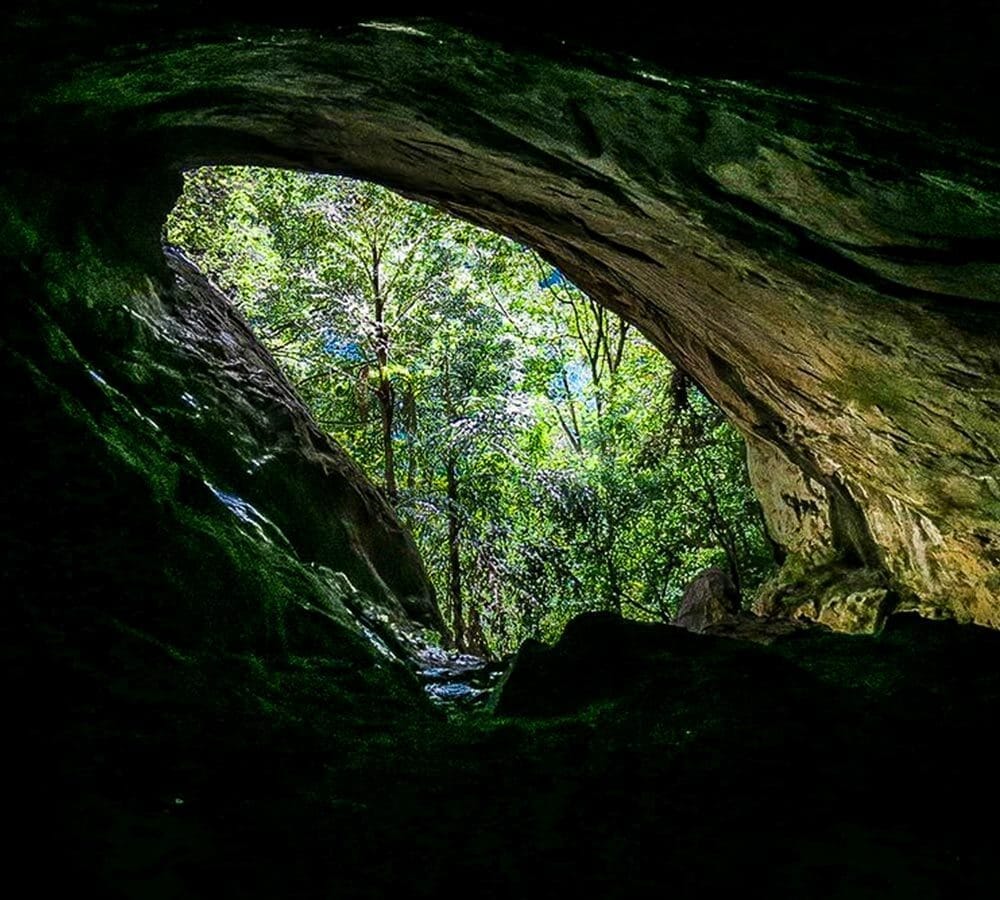
RAVANA CAVE
The famous Ravana Ella Cave lies 1,370 m (4,490 ft) above sea level on the foundation of a cliff. Its association with the epic Ramayana has made it a popular tourist attraction. Legend tells us that during the time Sita was kept imprisoned in the cave, she bathed in the pool of water at the bottom of the waterfall.
The cave also has an archaeological significance, since the discovery of 10 skeletons of the cannibalistic Balangoda Man or the Homo sapiens Balangodenis in the cave, by Sri Lankan palaeontologist, Dr. Paul Deraniyagala. The excavations reveal evidence of human habitation dating back 25,000 years.
RAVANA ELLA FALLS
This is one of the widest falls in Sri Lanka and measures approximately 25 m (82 ft) in height, cascading from an oval-shaped concave rock outcrop. During the local wet season, the waterfall turns into what is said to resemble an areca flower with withering petals. Ravana Ella was named after Ravana, the demon ruler of Sri Lanka who appears as the main antagonist in the legendary Indian epic, Ramayana.
According to legend, Ravana kidnapped the Indian princess Sita and hid her in the cave behind the waterfall. The cave is known as Ravana Ella Cave. The incident led to the famous battle between Rama and Ravana, when Rama launched a lengthy battle against Ravana to rescue Sita, his wife. The fall is located near the village of Udunuwara on the Ella-Wellawaya Road and attracts many local and international tourists.
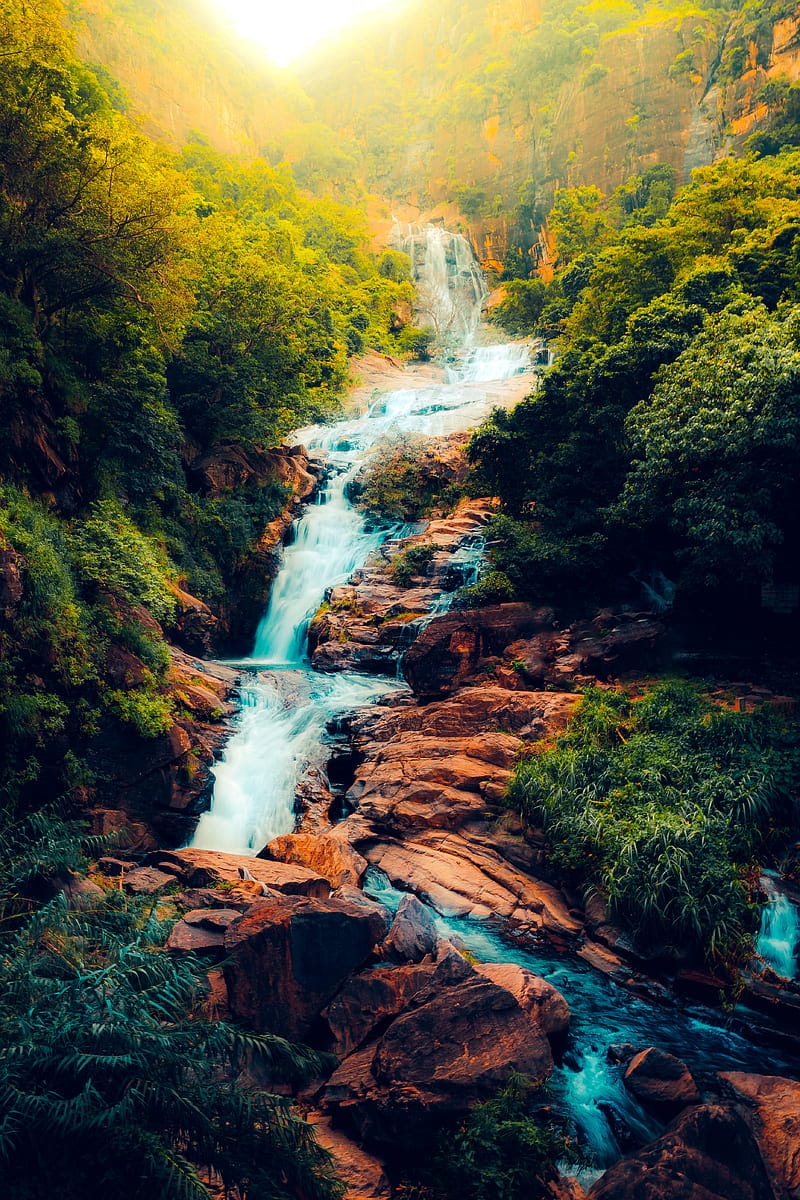
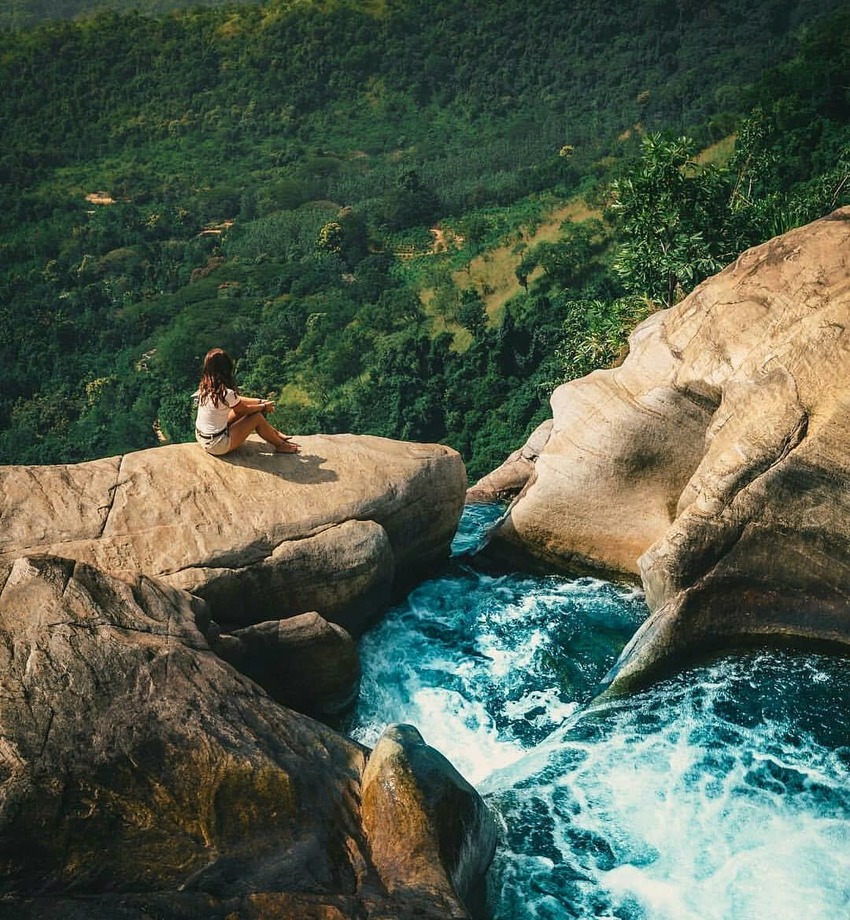
DIYALUMA FALLS
Diyaluma Falls is the second highest waterfall in Sri Lanka and ranks as the 361st in the world. It is 220m high and is situated 6 km away from Koslanda, beside the main highway to Wellawaya. The Falls are formed by Punagala Oya, a tributary of Kuda Oya which in turn is a tributary of Kirindi Oya. It cascades down an escarpment of the Koslanda Plateau and the stream of water quickly escalates after a downpour.
In Sinhalese, ‘Diyaluma’ means “falling water” and according to the famous historian, Dr. R.L. Brohier, the waterfall was a setting for a folklore tragedy involving a young King and a young woman of a low-caste.
LIPTON’S SEAT, ST. CATHERINE’S SEAT AND PILKINGTON POINT
45 minutes drive from Mountain Heavens
Lipton’s Seat is quietly nestled in Dambetenna in the Haputale Mountain region. The lookout from Lipton’s Seat rivals that of the World’s End; its unparalleled views were once popular with the Scottish tea baron Sir Thomas Lipton. This is where he chose to survey his burgeoning tea empire, thus the origin of its name. The Point has extraordinary views over Uva, Southern, Sabaragamuwa, Central and Eastern provinces.
St. Catherine’s Seat, situated in the upper division of Nayabedda Tea Estate provides breathtaking views of Bandarawela, Diyatalawa and the surrounding mountains of the Uva Basin. Nayabedda tea estate is located in the Poonagala hills and has plenty of scenic views of the surrounding mountain range. From Poonagala, on the road to Koslanda, you will meet the Pilkington Point, which has fabulous views over Wellawaya and Moneragala.


ADISHAM MONASTERY
A four km drive from Haputale, Adisham monastery is a religious house that belongs to the Catholic Church and has a history going back as far as 1887.
HORTON PLAINS AND TEA PLANTATION
Walk alone from end to end in the hushed Horton Plains. Stand 2,000 m high, on the verge of the icy, frosty savannah and lower your eyes towards the next landmark, a tea plantation some 900 m below. Look ahead yonder the waves of mounts, tracery waterfalls, foggy lakes and paddy fields to the rosy salterns of Hambantota and the glistening sea, in a horizonless arc.
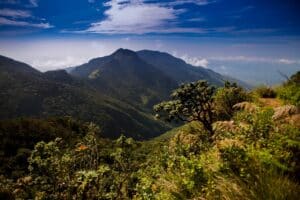

DOWA CAVE TEMPLE
Dowa Temple is situated at the foot of a knoll on the banks of a captivating hill stream. The cave, with its enigmatic celestial attraction, is a major tourist destination in Badulla where visitors adore the ancient and exquisite paintings of Kandyan style that titivate the walls of the Dowa Cave Temple. A magnificent 4m-high standing Buddha is carved into the rock face below the road.
Muthiyangana Raja Maha Viharaya
History of this site starts with the Lord Buddha’s 3rd arrival to the island but legends on the area called Badulla begins from 19th – 18th century BC. Some names of places in the area, e.g. Seetha Eliya, Seetha Kotuwa, Ravana Ella, etc., refers to the Seetha and Ravana – the main characters in the Indian episode titled Ramayana. So it is believed that said war had taken place in this locale, where was the capital of then powerful king named Ravana who ruled the island.[2]
Buddhists believe that this site has been visited by Gautama Buddha, and it is regarded as one of the Solosmasthana, the 16 sacred places in the country.[3] On the 8th year after attaining the Enlightenment, the Lord Buddha made His 3rd visit to Kelaniya on the invitation by a king of Naga people named Maniakkitha. During this visit, a local chieftain named Indaka invited Lord Buddha to visit his place in Badulla. At the end of sermons made by Lord Buddha there, Indaka had wanted something to worship in memory of Lord Buddha’s visit. The Lord Buddha is said to have given him a few of His hairs and a few drops of sweat that turned into pearls (mukthaka). Indaka had enshrined these secred hair and pearls in a stupa, believed to be the stupa here.[4] Indaka, the chieftain of then Deva people is now regarded as a deity, reigning the Namunukula mauntain range[2] and Muthiyangana Raja Maha Viharaya


Maligawila Buddha Statue
The Maligawila Buddha statue is located close to the village of Maligawila in the Moneragala District of the Uva Province in Sri Lanka. It has been carved from a single large limestone rock, and is considered to be the tallest ancient free-standing image in Sri Lanka,[1] at a height of 37 feet 10 inches (11.53 m).[2] Along with the Buddha statues of Avukana and Buduruvagala, the Maligawila Buddha statue is considered one of the best examples of the standing image of the Buddha from ancient Sri Lanka.[3] It bears a close resemblance to the Avukana statue, and depicts the same asisa mudra, a variation of the Abhaya mudra.[4] The standing Buddha clutches the robe at the left shoulder, while the right hand is raised to the right shoulder.[2]
Ruins around the statue indicate that an image house had been constructed around the statue.[5] It appears to have been about 80 feet (24 m) each in length and breadth,[1] with walls 4 feet (1.2 m) thick. Its height would have been about 65 feet (20 m)
Dematamal Viharaya
Dematamal Viharaya is a Buddhist temple in Okkampitiya village, Monaragala district, Uva Province, Sri Lanka. Its history goes back to the 3rd or 2nd century BC.[2]
According to folklore, it is the place which provided safety to Prince Saddhatissa, who was attempting to flee after losing the fight with his elder brother, Prince Dutugamunu

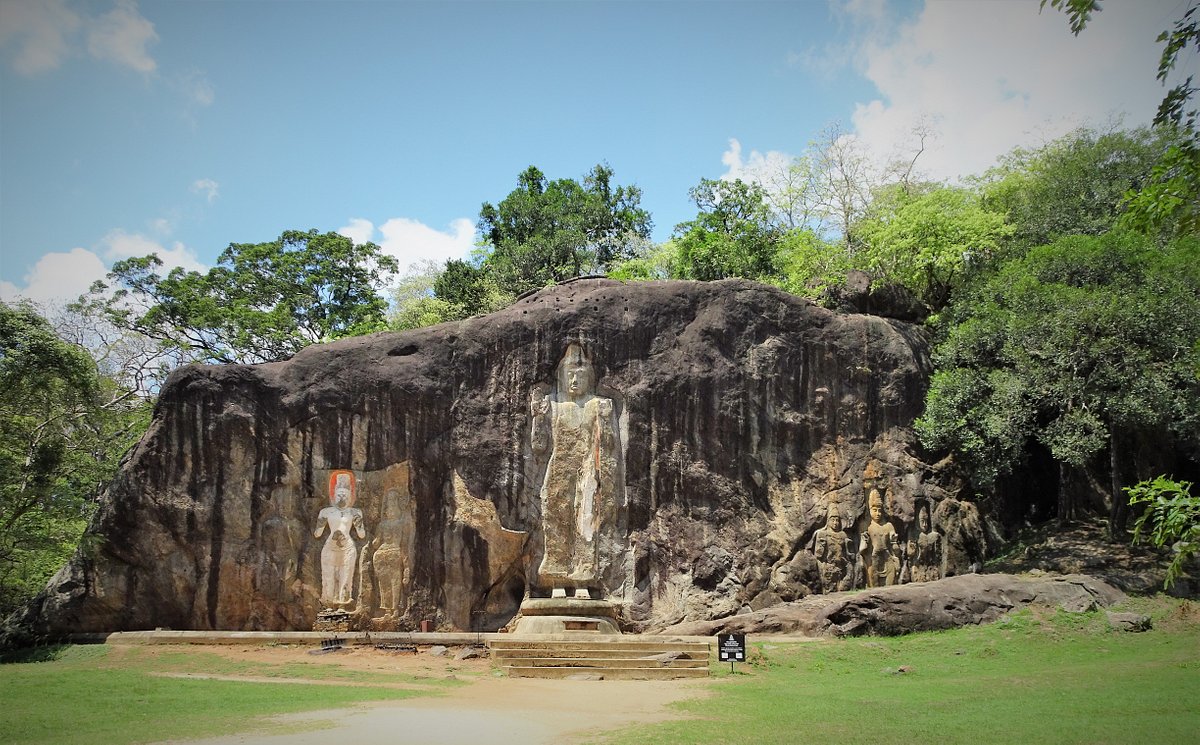
BUDURUWAGALA
Surrounded by a beautiful man-made ancient lake, are the relatively unknown mysterious historic rock sculptures of Buduruwagala. These seven colossal figures pertaining to the Mahayana Buddhist Doctrine are sculptured on to a rock face, and continue to remain a controversy. They are generally dated back to the 9th or 10th century. Buduruwagala does not have a recorded history and its original name is unknown.
The name Buduruwagala means “stone images of the Buddha,” and the largest of the standing Buddha statues is 51 feet tall, the tallest Buddha statue of the island, and perhaps in the world since the destruction of Bamiyan figures in Afghanistan. The sculpture at Buduruwagala is in lower relief unlike the other comparable Buddha statues in the country at Aukana (46 ft), Saseruwa (36 ft) and Maligawila (36 ft) and for all of which it may have served as a model.
On the same rock where the sculptures are carved, there is a mysterious carved shape resembling a flame, of about 3 feet (0.91 m) wide and 4 feet (1.2 m) deep. Its inside walls are always wet with an oily substance that smells of mustard oil. The reason for this particular phenomenon is yet to be explained.
Mini Adams Peak
We recommend this as a must do in Ella with full ratings; you would absolutely love the experience.
Mini Adams peak is the closest and easiest hike in Ella. You will get to the entrance in about 15 min walk from Ella town. Otherwise you can take the bus towards Passara or a tuk tuk.
If you are starting from Ella town, go towards the Passara Road and you will reach the entrance at 3rd mile post just after the Flower Garden Resort to your right with a sharp bend.
Place got some other names too. So don’t get mis-leaded. Some calls it Punchi Siri Pada, Small Adams Peak, and Little Adams Peak.
It is 1141 m in height and from the entrance it takes up to 30-45 min for the hike. Views from the summit are incredible. 360 degrees panoramic views with clouds rolling in, is a treat to watch for any traveler.
Hike itself is a worthy experience as you walk through lush green tea estates, talking to locals who are plucking and collecting tea leaves, working in the estate.
We recommend you go early mornings or late evenings for the best views and it will be less tiring.
Difficulty level of the hike is moderate, but make sure you be safe at the summit when trying out poses for the camera while sitting on rocks.


Ella Rock
If you love living green, then Ella is obviously a place to visit. Ella Rock is one of the place which proves it.
Trekkers would love the place. It’s bit tiring to do the hiking. But it is definitely worth it. Once you got to the summit you will realize why we said so. The panoramic views it provides with mist and cloud covering the area, especially in the early mornings and the late evenings are something you should witness and that would suffice enough to say that you visited Ella.
Total time for climbing up and down is 4 hours. Yes, sounds like a long journey. But the way up there is with full of diversity. If you are starting form Ella train station, you would enjoy the rail walk, and soon as you started climbing up, you will be passing a waterfall, the rubber tree forest and tea plantations.
On a rainy day, it can be slippery, so better be cautious with what you wear for the journey. Wear something suitable for a hiking and towards the end of the hike, route will get bit harder with the steep, still manageable.
Kadadora Vihara
Kadadora Vihara (Also known as Kadadora Sri Priyabimbaramaya Vihara) was a Buddhist temple, situated in Kadadora, Nuwara Eliya District, Sri Lanka. The temple was abandoned and ruined as the construction of Kotmale Dam in 1979 by Mahaweli Development programme. The ruins of Vihara still can be seen when the water level of Kotmale Reservoir is low, but the sight is very rare.
It is said that about 57 villages and 54 religious places in Kotmale were submerged with the completion of the reservoir in 1985.[1][2] Except Kadadora Vihara other shrines including Thispane Vihara, Morape Devalaya, Othalawa Vihara, Pattini Devalaya and Medagoda Vihara were said to have gone under water when the reservoir was built.[3] However, many of these temple ruins no longer exist.
In order to compensate the loss of these religious shrines those were submerged in the reservoir, the Mahaweli authorities started the construction of bubble shaped Stupa, Mahaweli Maha Seya which only second to the great Ruwanwelisaya of Anuradhapura in height.[4]
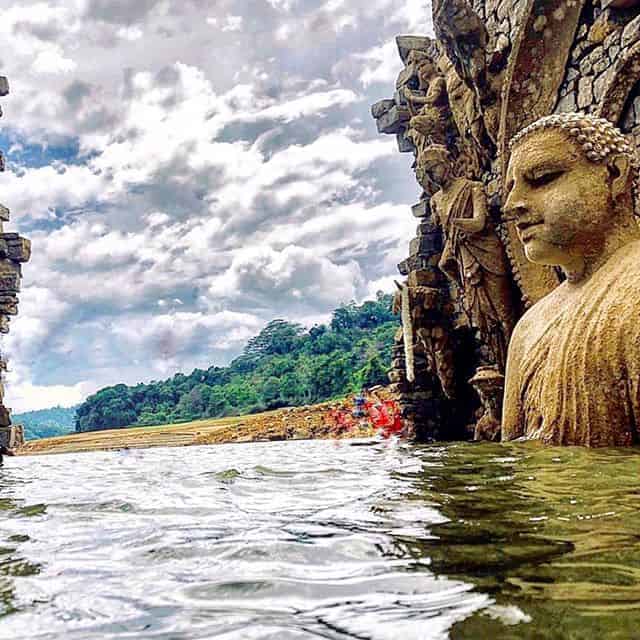

Nine Arch Bridge
Train tours in the highlands of Sri Lanka, is rated as one of the best train tours in the world.
And of course, the majestic Nine Arch Bridge is one of the many reasons for that. The glorious Nine Arch Bridge between Ella and Demodara station is one of the engineering marvels in the early 20th century.
This bridge, which is almost 100 years old, has been built with blocks of stone and cement without any strengthening iron or concrete. The giant arches take the bridge on a curved path to link to mountains. The Bridge was commissioned in 1921 under the British Government.
Access to the place is not that hard, but takes some rail walk from Ella town.
There is a story behind it that you would love to hear.
The World War One broke out and the steel consignment allocated for this site was seized and was used for war related projects. When the work came to a stoppage the Sri Lankan (named Appuhami) came forward and build the bridge with solid stone bricks and cement without steel.

